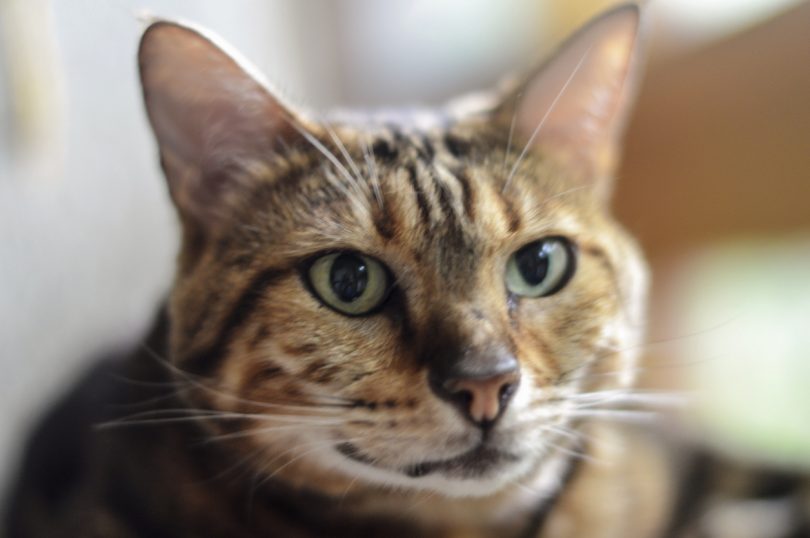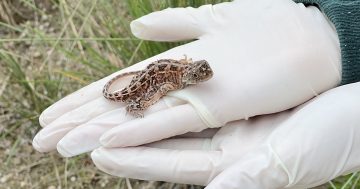
Canberra cats such as Pebbles must remain at home if they move to the new suburb of Taylor. Photo: Glynis Quinlan.
Home buyers in the fledgling Gungahlin suburb of Taylor will have to keep their cats inside their property boundaries following the announcement that it has become the latest cat containment zone.
Taylor is the thirteenth Canberra suburb to be declared a cat containment area amid a controversial push from the Conservation Council ACT Region for the whole of Canberra to be made a cat containment area by 2025.
Minister for Transport and City Services, Meegan Fitzharris, said that the decision to stop cats from roaming free in Taylor would help protect native wildlife such as the pink-tailed worm-lizard and the golden sun moth.
“Taylor is being developed close to the Kinlyside Nature Reserve and nearby open space and grasslands, which provide habitat for a range of native species including the golden sun moth and the pink-tailed worm-lizard,” Ms Fitzharris said.
“Roaming cats are known to prey on a wide variety of native animals including in our nature reserves, so it is important we act to protect wildlife in areas like the Kinlyside Nature Reserve.”
Under the Domestic Animals Act 2000 an area can be declared a cat containment area if cats in that area are judged to pose a serious threat to native wildlife.
People living in cat containment areas must confine their cats to their premises at all times.
Ms Fitzharris said that responsible ownership of cats was important to preserve Canberra’s rich natural wildlife.
“One of the great things about our bush capital is the range of native wildlife that calls Canberra home,” Ms Fitzharris said.
Other Canberra suburbs which have already been declared cat containment areas include Bonner, Coombs, Crace, Denman Prospect, Forde, Jacka, Lawson, Molonglo, Moncrieff, Throsby, Wright and ‘The Fair’ at Watson.
Pet owners in these suburbs reportedly face penalties of $1,500 if their cats are found wandering the streets but at this stage the laws don’t appear to be strictly policed.
The new suburb of Taylor does not even have any residents living there yet. However, developers will be required to erect cat containment signs in the area to remind new residents of their responsibilities as cat owners.
“The ACT Government is focused on increasing public awareness of the need to address the problem at source – responsible cat ownership,” Ms Fitzharris said.
“We have been working within communities to encourage people to keep their cats contained, even in non-cat containment suburbs.”
Do you think the whole of Canberra should be made into a cat containment zone? What about Taylor and new suburbs near native wildlife? Let us know your thoughts in the comments below.














